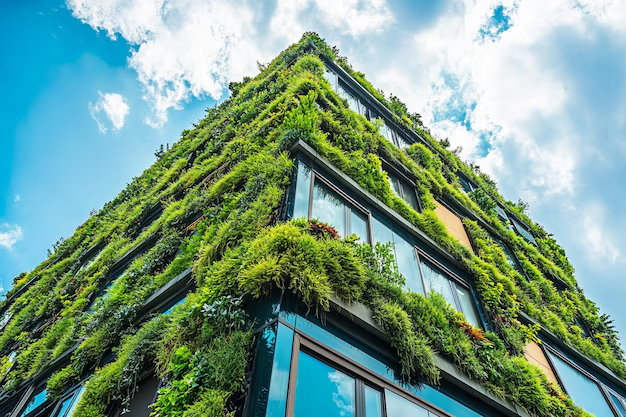Is Investing in a Green Home a Smart Financial Move?
Imagine stepping into a home that is not just an eco-friendly space but also a money-saving machine. Green homes have emerged as a popular choice among environmentally-conscious homeowners. But can these energy-efficient dwellings really save you money? Let's explore the costs and benefits to see if investing in a green home is a wise financial decision.
Initial Investment and Savings
Transitioning to a green home involves upfront costs like installing solar panels, energy-efficient appliances, and eco-friendly materials. Although these initial investments may seem steep, the long-term savings can be significant. For instance, solar panels can reduce electricity bills by up to 50%, depending on the solar potential of your location. Appliances with an ENERGY STAR rating consume significantly less energy, leading to further reductions in utility bills.
Moreover, many governments offer tax incentives and rebates for green upgrades. These programs can offset part of the initial costs, making the investment in energy efficiency more attractive. If you live in an area where such financial aids are available, the barrier to entry for going green might be lower than you think.
Maintenance and Durability
One of the major concerns with conventional homes is the maintenance cost. Green homes, however, often use durable materials that require less frequent replacements. These materials, such as bamboo or recycled metal roofing, are designed to endure the test of time. As a result, homeowners can enjoy reduced maintenance expenses over the years.
Additionally, improved insulation in green homes not only cuts down on heating and cooling costs but also minimizes wear and tear on HVAC systems, prolonging their lifespan and reducing repair bills.
Higher Resale Value
The market value of green homes is another significant financial benefit. With the growing demand for sustainable living, homes equipped with eco-friendly features often fetch a higher resale price. As more buyers become environmentally conscious, this trend is likely to continue, ensuring that your investment appreciates over time.
Government and Financial Support
Navigating the financial landscape for green homes requires forethought and knowledge of available support systems. Many homeowners leverage government grants and financial programs specifically designed to make energy-efficient upgrades accessible. Programs such as the PACE (Property Assessed Clean Energy) financing allow homeowners to finance the cost of green upgrades through property taxes, easing the upfront financial burden.
Additionally, educational opportunities in the form of workshops and seminars provided by environmental organizations can help homeowners understand green technologies and effective ways to incorporate them into their homes.
Considering the Whole Picture
Investing in a green home is not just about saving money. It requires a holistic approach—balancing upfront costs, government incentives, long-term savings, and environmental impact. While the initial investment may seem significant, the financial and ecological rewards over time make it a compelling choice.
For those who wish to explore this path further, it's valuable to look into existing support systems that can make the transition smoother and more affordable. Remember, the goal of going green is not only to save money but also to contribute positively to the planet's health.
🌟 Financial and Educational Support for Going Green
- Federal Tax Credits for Energy Efficiency: Reduces your tax bill for installing energy-efficient systems.
- State and Local Rebates: Check local government programs for additional incentives.
- PACE Financing: Spread upgrade costs across your property tax bills.
- ENERGY STAR Appliance Discounts: Rebates and discounts on certified appliances.
- Green Building Workshops: Educational resources for homeowners.
- Educational Grants: Scholarships for studying environmental sciences and sustainable design.
- Credit Card Offers: Special offers with cashback for purchases on energy-efficient appliances.
